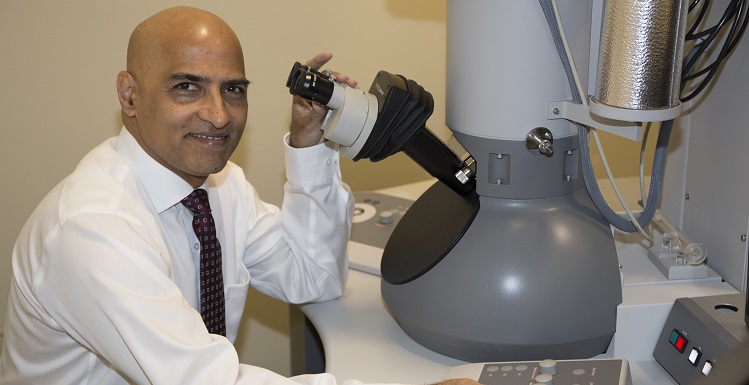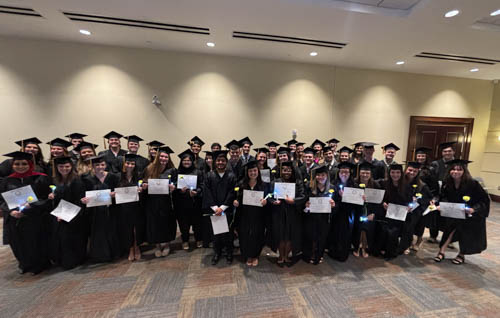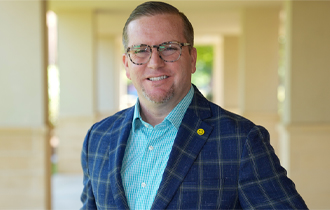University Installs Transmission Electron Microscope; Will Enhance Multiple Research Interests
Posted on June 2, 2015

The University of South Alabama has opened a new frontier of research for the University with the addition of a transmission electron microscope, or TEM, at USA’s Shelby Hall. The microscope will allow University researchers to examine structure, composition and properties of materials at a scale of a nanometer, which is one-billionth of a meter.
“The TEM’s scale of resolution is critical for ongoing research in the material and biological sciences, as well as integrated studies into intersections of these disciplines, particularly in the areas of nanoparticles and multi-scale modeling of complex systems,” said Dr. Srinivas Palanki, professor and chair of chemical and biomolecular engineering in USA’s College of Engineering.
The $1 million, 10-foot-tall microscope was funded largely by the National Science Foundation through its competitive Major Research Instrumentation program. Palanki is the principal investigator who submitted the grant that led to the NSF award for South Alabama.
“One of the hallmarks of a research university is cross-collaboration, which is what we have here” said University President Dr. Tony Waldrop at the dedication ceremony. “We are looking for great things with the TEM.”
The TEM forms a major part of USA’s Imaging Core Facility at Shelby Hall and is expected to receive heavy use by researchers in the colleges of engineering and medicine, as well as USA’s Mitchell Cancer Institute, for fundamental and applied research in material science and bioengineering, but “there will be opportunities for use by faculty and students across multiple disciplines,” said University Provost and Senior Vice President for Academic Affairs Dr. David Johnson. “Undergraduate students can participate in research with faculty, and that’s a competitive advantage USA has,” added Johnson.
Dr. John Steadman, dean of USA’s College of Engineering, noted that 24 University faculty were listed as investigators in the grant proposal. “Our vision for the TEM is to facilitate more collaboration throughout the University,” said Steadman. “This acquisition can take USA’s collaborative research to the next level.”
The addition of the TEM marks an important step in USA’s ongoing priority of enhancing research activity, said Lynne Chronister, USA vice president for research and economic development. “The University of South Alabama faculty and students, as well as the greater community, will benefit tremendously from the receipt of this prestigious award from the National Science Foundation. The TEM will enable a broad range of research explorations not currently available in our region.”
The Major Research Instrumentation program at the National Science Foundation serves to increase access to shared scientific and engineering instruments for research and research training in institutions of higher education, not-for-profit museums, science centers and scientific/engineering research organizations. The program provides organizations with opportunities to acquire major instrumentation that supports the research and research training goals of the organization and that may be used by other researchers regionally or nationally.
Archive Search
Latest University News
-

Dr. Matthew Pettway Named Fulbright Scholar
Pettway will teach and conduct research as a Fulbright U.S. Scholar in...
April 24, 2024 -

USA Launches New Hospitality and Tourism Concentrations
Global leadership and events marketing and management concentrations w...
April 17, 2024 -

Mortar Board Receives National Award, Initiates New Members
South's chapter of Mortar Board has received the Ruth Weimer Mount Cha...
April 17, 2024 -

USA Administrator Named as Faculty at National Institute
Dr. Mike Wilkinson has been chosen as a faculty member for 2024 New Pr...
April 16, 2024


